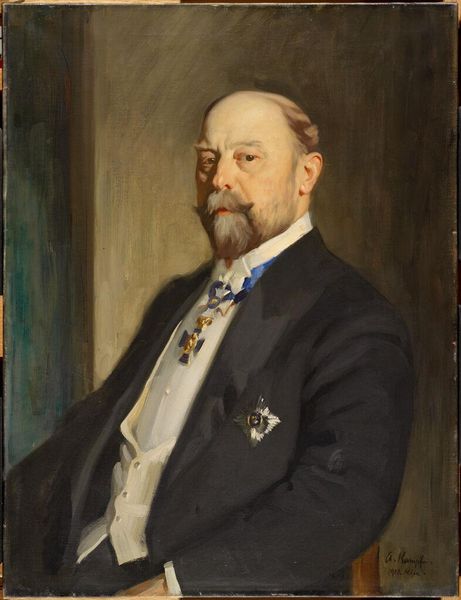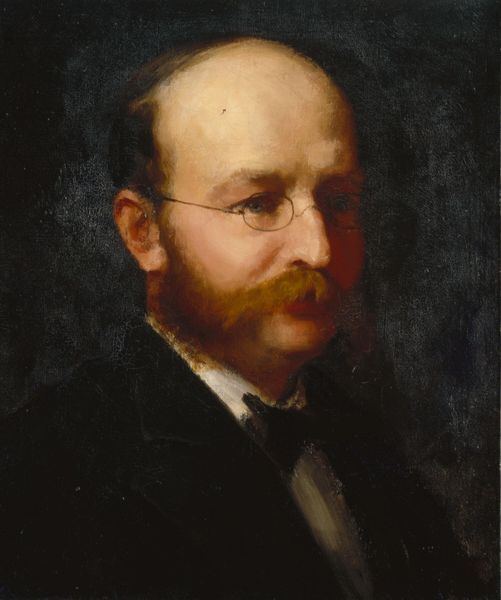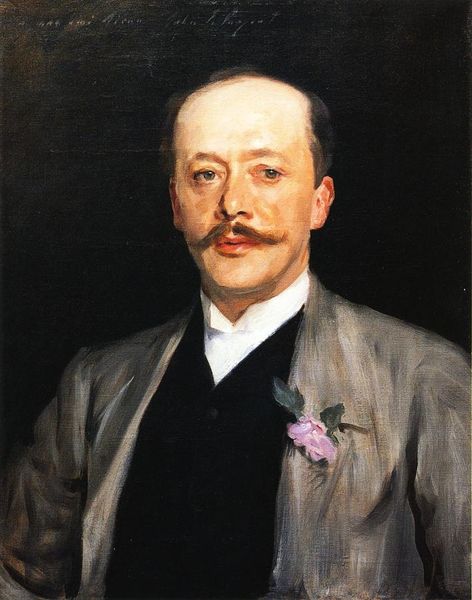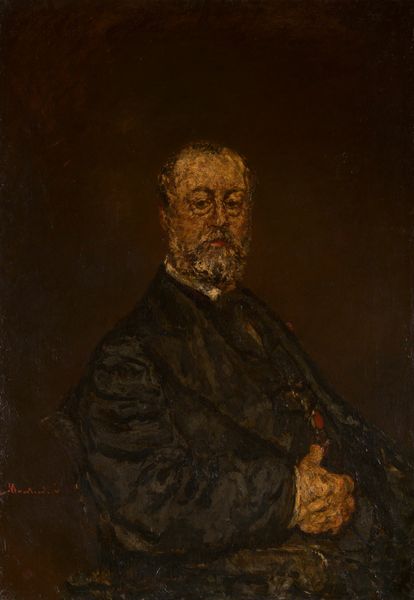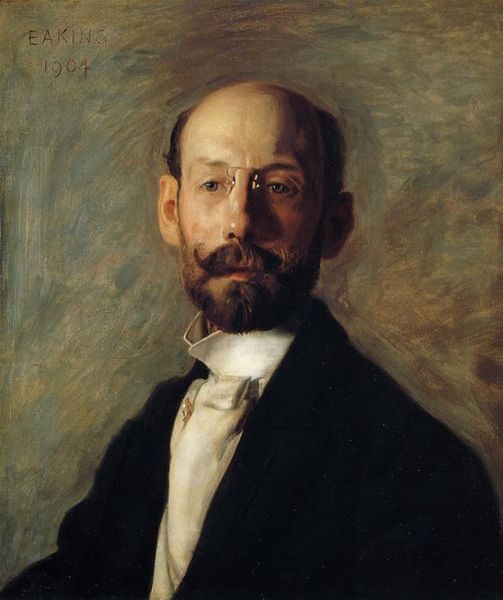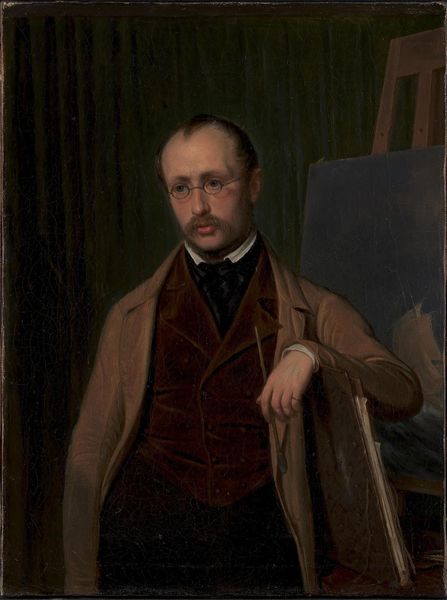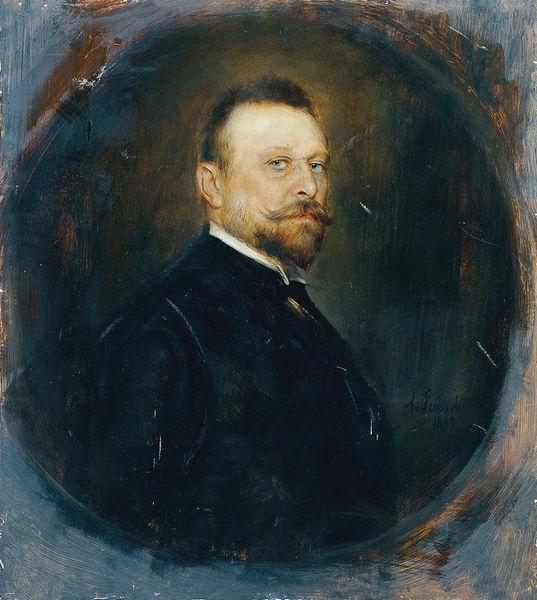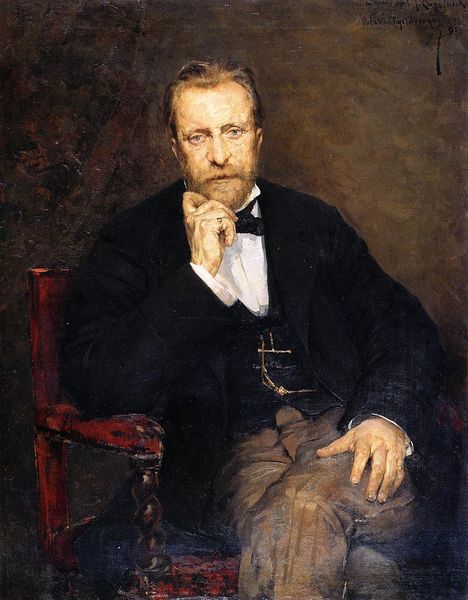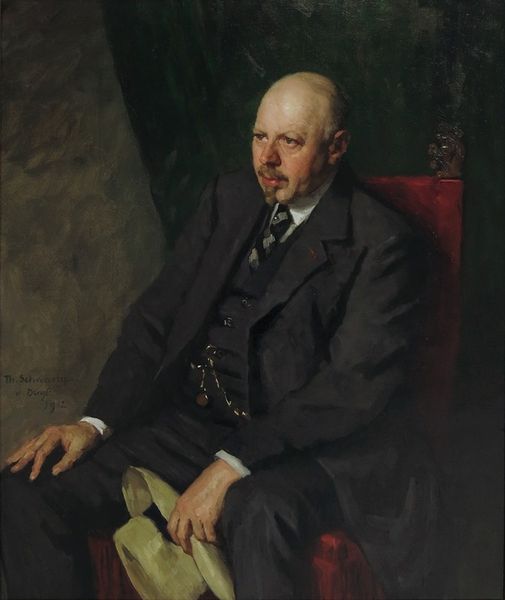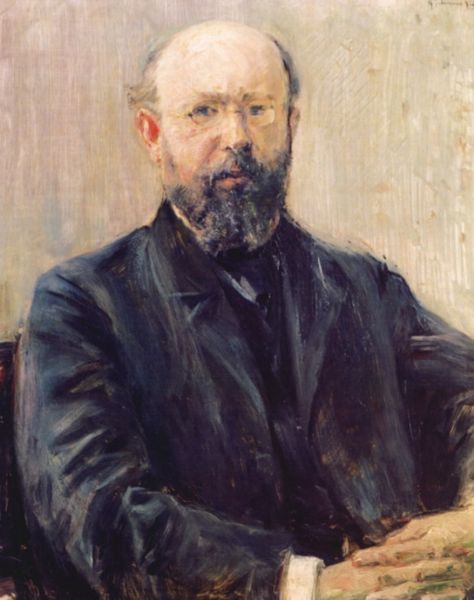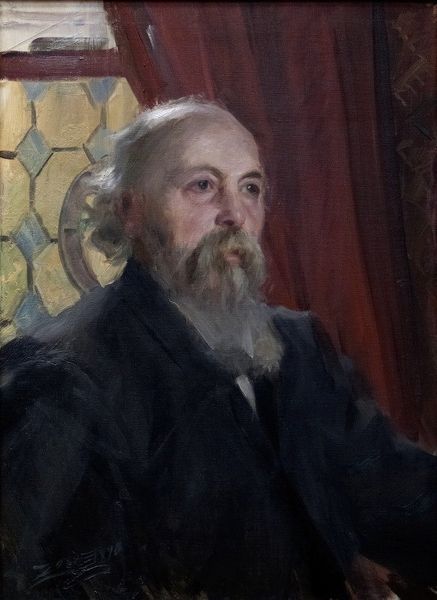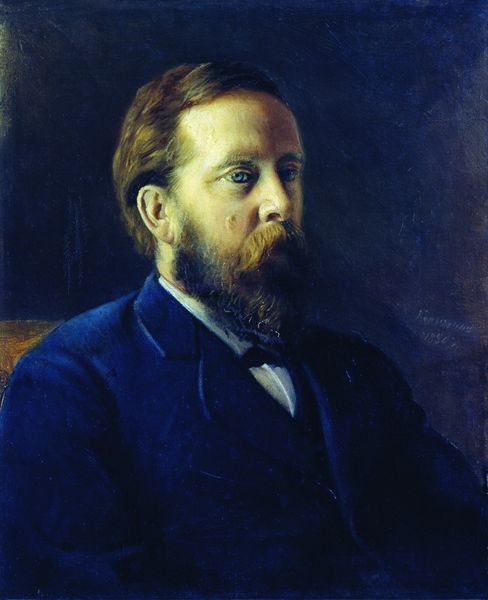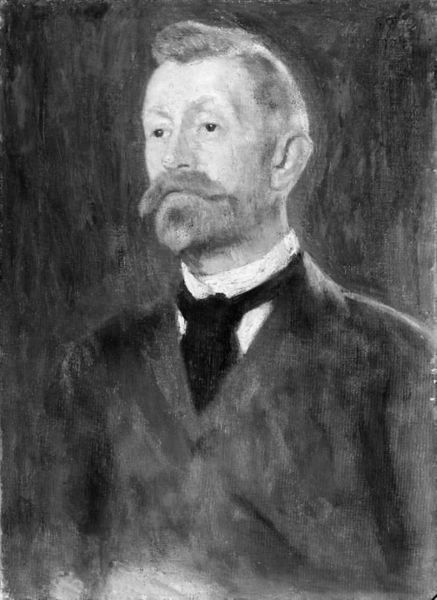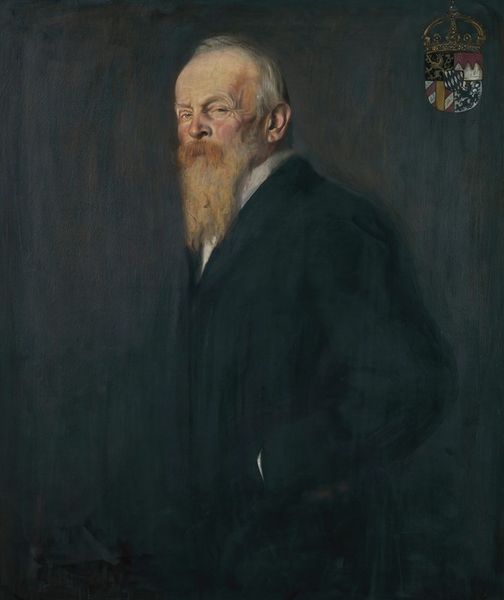
Copyright: Public Domain: Artvee
Curator: This is "Portrait d’homme," or "Portrait of a Man," created around 1879 by Mary Cassatt. It's oil paint on canvas. Editor: It's striking, isn't it? There's a quiet formality to it. The sitter's posture and dress are quite proper, but the overall feel isn't stiff at all. I would suggest it has something of a dreamy quality. Curator: It certainly encapsulates the artistic circles of the time. Cassatt was an American artist working among the Impressionists in France, deeply involved in representing contemporary life and the upper-middle class. You can really feel the social stratification just in the fabric and cut of his jacket. Editor: Yes, the clothing details are a clear signal. I see the semiotic interplay between the dark coat and the more vibrantly colored surroundings, highlighting the subject's detachment while paradoxically framing him within the composition's softer aspects. Notice also how the textures throughout give an ethereal aura to something quite concrete like a man's portrait. Curator: Absolutely, and the way she used materials tells its own story. Cassatt was experimenting with impressionistic techniques to highlight everyday life and particularly social roles, moving toward representing this specific time in Paris and her unique experience as a woman artist in a very male-dominated world. I'm interested in her social context and how her gender shaped her approach to the genre. Editor: Speaking strictly on formal values though, look at how the composition itself uses subtle cues, and the colors work harmoniously to produce an ambiance of understated grace. The atmospheric blending really evokes emotional sensitivity rather than stoicism, doesn’t it? The balance she strikes—or disrupts—between realism and subjective feeling is quite masterful here. Curator: And one cannot neglect the production and materiality—how women's artwork throughout the nineteenth century often challenged and transformed the conventional portrayals, contributing a feminist perspective to representational artwork itself. In the case of Cassatt, even in a portrait, she’s commenting upon issues of representation, challenging traditional artistic styles within her work. Editor: Well, that perspective certainly provides another level to unpack as one appreciates this pastel work, although I stand firm in recognizing Cassatt’s technical control to construct such visually engaging and beautiful work. Curator: Indeed. Her work is a historical commentary as much as aesthetic artistry! Editor: I'd agree with you on that as a final note for our audience!
Comments
No comments
Be the first to comment and join the conversation on the ultimate creative platform.
